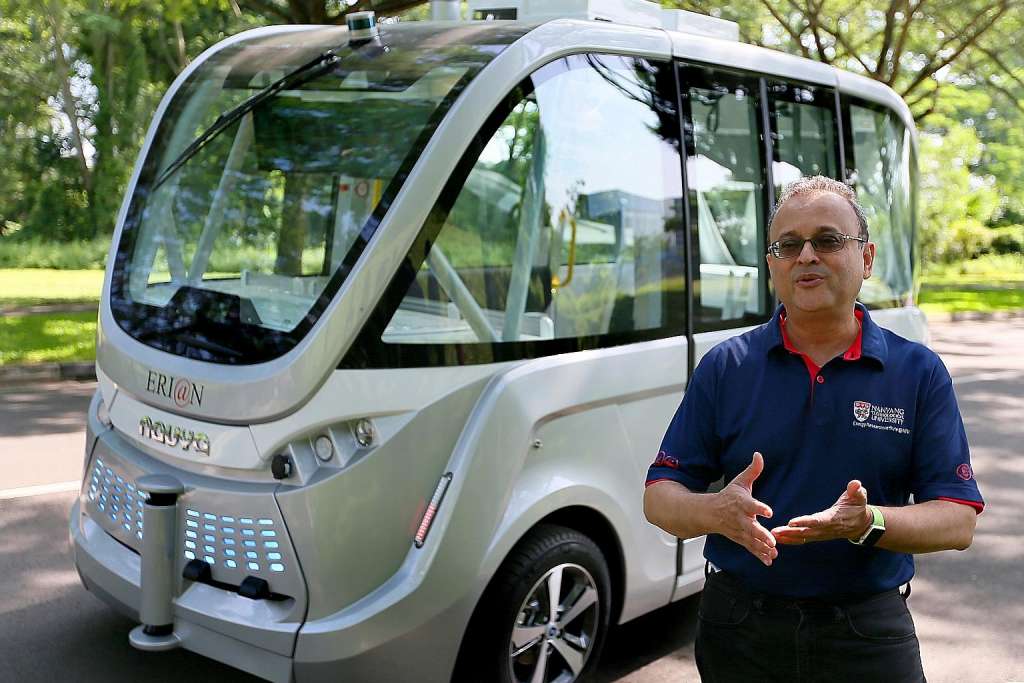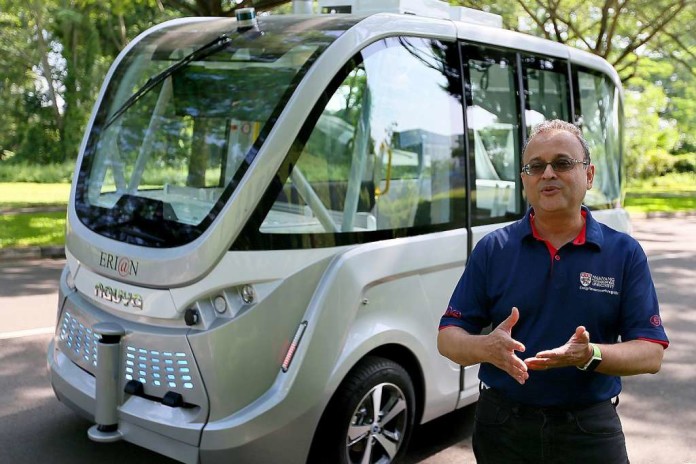In the lead-up to launching Singapore’s first self-driving bus in two years, scientists at the Nanyang Technological University (NTU) are ramping up their research in autonomous vehicle (AV) technology, through the use of larger and more sophisticated vehicles.
Within the next three months, they plan to roll out a driverless, air-conditioned shuttle that can carry up to 15 passengers. It will ply between CleanTech Park and the NTU campus over a 1.5km route.
Arma, the shuttle developed by French company Navya, will be the largest AV the Energy Research Institute at NTU (ERI@N) is putting on the campus’ roads, building on its expertise with smaller self-driving vehicles, including a golf cart and an eight-person shuttle.
Plans are also afoot to test out a 25-seat self-driving bus next year, before scaling up to two full-sized buses in 2018.
“This will allow us to determine how many and what types of sensors are needed to go from a bus which can carry 15 passengers to a full-sized one, which is a 45- to 50-seater,” said ERI@N executive director Subodh Mhaisalkar.
The eventual pilot of the two full-sized, self-driving buses is a collaboration between the Land Transport Authority and ERI@N, under a partnership inked in October.
It is part of Singapore’s push towards AV adoption, which includes existing trials of self-driving taxis at one-north and the development of a 1.8ha test circuit at CleanTech Park.
To move autonomously, the Arma shuttle uses a Global Positioning System and four intelligent cameras that analyse road signs and traffic lights, along with eight lidar (light detection and ranging) sensors, which use laser beams to map its surrounding environment and detect obstacles.
The vehicle’s software then makes sense of the data collected from the cameras and lidar sensors, helping the bus “to understand its environment, and when it needs to make a decision, such as the avoidance of traffic or going around an obstacle”, said Professor Mhaisalkar.
Addressing issues of safety, Prof Mhaisalkar said the Arma will be tested out in different scenarios, such as in stop-and-go traffic, negotiating a roundabout and driving around obstacles, including a broken-down car.
It will also be programmed to run on a fixed route, he added.
On Oct 18, a driverless car being tested by start-up nuTonomy collided with a lorry in Biopolis Drive.
It is believed to be the first accident in Singapore involving an AV.
When launched, the Arma shuttle will run at speeds of up to 40kmh. It has 11 seats and standing space for four passengers.
An all-electric vehicle, it has a range of 130km on a full charge of battery.
An operator will be on board to assist passengers, or to take control of the shuttle when needed.
adrianl@sph.com.sg

This article was first published on Dec 15, 2016.
Get a copy of The Straits Times or go to straitstimes.com for more stories.







